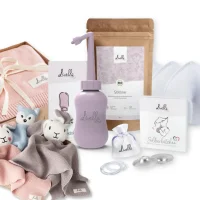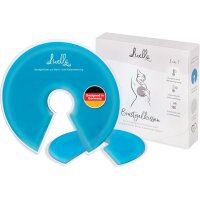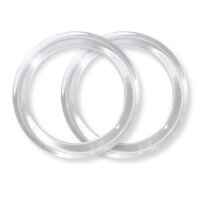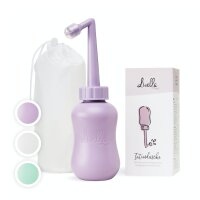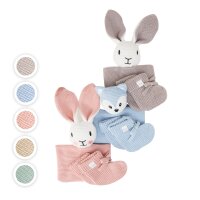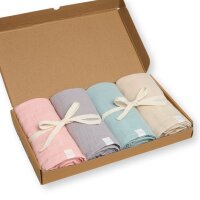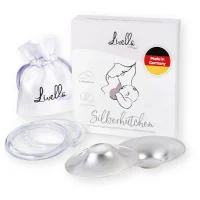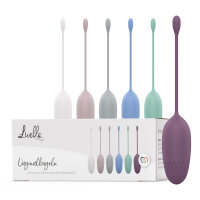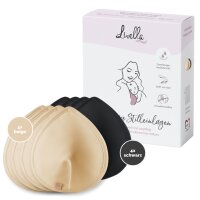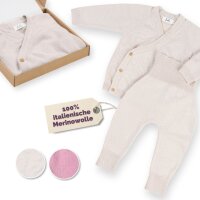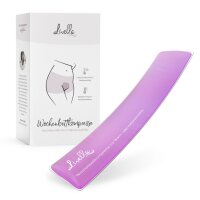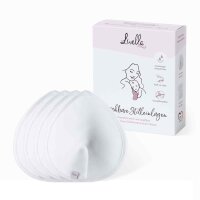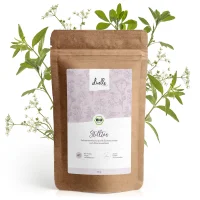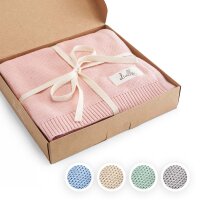It’s amazing in how much detail new parents can discuss the contents of their baby's nappy. Whether it's the colour, the texture or the smell, their baby’s poo is often analysed down to the smallest detail.
Breast milk stools can come in many different colours and textures and have very different smells. But what does a healthy breastfed baby’s poop look like? What texture should it be and how should it smell? And what does it mean when a breastfed baby has green poop?
Table of content
A breastfed baby’s poop changes in the first few days after birth
Breastfed baby poo: colour, texture and smell
What to do if breastfed baby poo takes on an unusual colour or smells bad?
When should I worry about my breastfed baby’s poop?
Breastfed baby poop: frequently asked questions
A final word on breastfed baby poop
A breastfed baby’s poop changes in the first few days after birth
New parents often wonder what to expect from their baby’s nappy. The important thing to remember is that the colour and texture of a baby’s poop changes throughout the first year of life. This is completely normal.
You will already notice the first changes in your baby’s stool after breastfeeding for the first few days. A newborn baby’s first poop is black and gooey. This is known as meconium, which is a mixture of amniotic fluid, bile, skin cells and hair.
In the days that follow, a breastfed baby’s poop takes on a greenish-black to greenish-yellow colour. The consistency also becomes noticeably softer and runnier. After three to six days, the colour of a breastfed infant’s stools will change to yellow. The odour should then be rather fruity and slightly acidic, but not unpleasant.
The yellow colour will persist for as long as your baby is exclusively breastfed. The same goes for the texture, which will remain soft and shapeless. What will change, however, is the number of full nappies. Up to the fourth week, their number will increase. Thereafter, it will start to decrease again.
So, how often do breastfed babies poop? There is no definite answer to this question because there are many factors that can influence how many full nappies your baby has in a day. While some babies still have up to three full nappies a day, others may not do poo for up to two weeks.
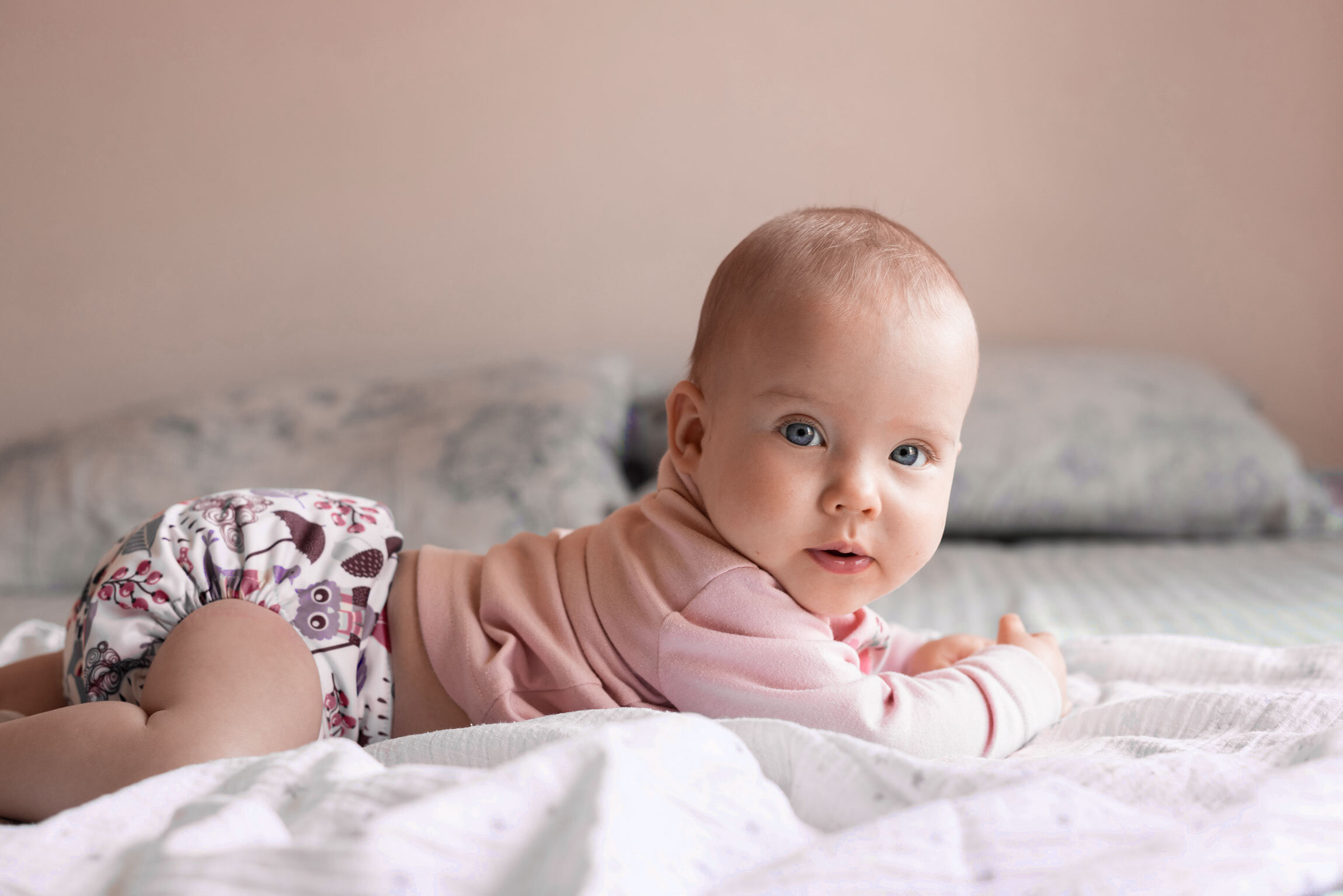
Breastfed baby poo: colour, texture and smell
In the first few days after birth, the colour of a breastfed baby’s poo changes from black to green to yellow. This is totally normal. However, the colour, smell and consistency of your baby’s poo might also change in the following weeks.
Watch out for any changes that seem unusual because your baby’s breast milk stool is an important indicator that can reveal a lot about your baby's health and development. For new mothers, it’s important to know what the different colours and textures mean. Here is a little overview.
- Green frothy breast milk stools: A normal poop for a breastfed newborn is yellow in colour with a soft, almost runny texture. If your exclusively breastfed baby does a green poo, this could be the sign of an infection.
- Black breastfed baby poo: If your baby is given iron supplements, it’s normal for the stools to turn black in colour. However, if your baby’s nappies are suddenly black without the addition of iron supplements, you should see your paediatrician or doctor.
- Whitish baby stools: If your breastfed baby's poop is rather white than yellow, this could be a sign that the bile duct is blocked.
- Blood in baby poop: No matter if the blood is dark or light, if your baby’s poop contains blood, you should always have it checked.
What to do if breastfed baby poo takes on an unusual colour or smells bad?
Mums and dads are quickly alarmed when their breastfed baby's poop doesn't look and smell as it usually does. However, changes in poop colour, texture or smell don’t always have to be a reason for worry. Very often, these changes are simply a sign that your baby is going through a growth spurt or that other developments are taking place in the body.
Changes in your breastfeeding management can also affect your baby's stools. Here are some helpful pointers on what could cause your breastfed baby’s poop to change.
- Green stools: Green stools don't always mean that your baby has an infection. Sometimes green stools can simply be caused by the fact that your baby is getting too much foremilk when breastfeeding. In this case, all it takes to rectify this is to change your breastfeeding management so that your baby gets more hindmilk.
- Firm stools with a strong smell: If your baby's stools are firmer and smell more intense than usual, this may be due to the fact that they have temporarily been fed formula. Bottle-fed babies generally have firmer and stronger-smelling stools.
- Delayed stools or small amounts of poo: If breast milk stools are delayed or only tiny amounts are found in the nappy, this may be an indication that your baby is not getting enough breast milk. There can be various reasons for this. Perhaps you’re not getting a good breastfeeding latch or your breastfeeding position is not correct. Another possible cause could be that your let-down reflex is not working properly.
- Diarrhoea and sore baby bottom: Your breastfeeding diet can have a direct impact on your baby's digestion. Certain foods such as hot sauces can pass through breast milk and cause diarrhoea and sore bottoms in newborns. In this case, all you need to do is remove these foods from your diet. Taking certain types of medication while breastfeeding can also lead to diarrhoea.

When should I worry about my breastfed baby’s poop?
A breastfed baby’s poop is an important health indicator and every nappy change is a good opportunity for the new mother to do a little check. There are different changes in your baby’s bowel movements that require a visit to the paediatrician. Don’t hesitate to seek medical advice if:
- you discover blood in your baby’s breast milk stool
- your baby's stools turn white or black without any supplements or other dietary changes
- your baby has diarrhoea or suffers from constipation
Good to know: Expect your breastfed baby’s poo to change in colour frequently as soon as you start introducing complementary foods. That’s because the colour of the food will affect the colour of their poop. For example, if you feed your baby beetroot, the stools will change colour accordingly.
Breastfed baby poop: frequently asked questions
Breast milk stool is a much-discussed topic among new mums and their partners. Especially in the beginning, there are many open questions surrounding the nappy contents. We answer the most frequently asked questions.
What is normal breastfed baby poo?
As soon as your baby is exclusively fed mature breast milk, the stool should be a light to golden yellow colour and have a soft to liquid consistency. The odour is normally slightly sour to almost fruity, but by no means unpleasant.
What does green poop in breastfed babies mean?
Whether green breast milk stools are a cause for concern depends on when they occur. During the transition phase from colostrum to mature breast milk, greenish poop is completely normal. However, as soon as your baby is breastfed regularly, the stools should no longer turn green.
If the stools return to a greenish colour despite exclusive, regular breastfeeding, this could mean that your baby has an infection - especially if the texture is foamy and the poo smells bad.
However, there may also be other explanations for green breast milk stools, including:
- imbalanced feeding of foremilk and hindmilk
- formula feeding
- feeding green solids
- administering medication during breastfeeding
What does diarrhoea look like in babies?
If their baby's stools are a little runnier than usual, many parents are immediately alarmed that it could be diarrhoea. However, breastfed babies have a very low risk of getting diarrhoea. That’s because one of the many benefits of breastfeeding is that it protects babies from infections of the gastrointestinal tract.
Real diarrhoea in babies is typically characterised by:
- very runny stools (for several days in a row)
- large amounts of poop
- a sudden change in the consistency of the breast milk stool
- other signs of illness such as fever, discomfort and restlessness and crying at the breast
How often should breastfed babies poop?
How many full nappies a baby has per day depends on their age and development. The number of full nappies can therefore vary greatly. Here are some pointers on how many stools to expect:
- Day 2-3: one to two or three to four nappies per day
- Day 4-7: at least three full nappies per day
- Up to and including the 4th week of life: two to five (ideally three to five) full nappies per day
Starting with the fifth week of life, the number of full nappies usually decreases. At around three months of age, your baby will normally do two poos per day. Although this may vary. At this age, anything between three stools a day and one poop every fortnight can be normal. As long as your baby seems healthy and lively, there is no need to worry.
A final word on breastfed baby poop
A breastfed baby’s poo can have very different colours, textures, and smells. To avoid unnecessary worries, new parents should keep a few things in mind when it comes to their baby’s nappy contents.
- Over the course of the first year of life, the texture and colour of breast milk stools change frequently. Depending on your baby’s age, there are different standards for what counts as normal baby poop.
- In general, a breastfed baby’s poop should be yellow in colour and soft to runny in texture.
- The colour and consistency of your baby's stools are important indicators for your baby's health and development.
- Possible signs that something is wrong with your baby include stools with a very unpleasant smell, diarrhoea and blood in the stool. White, black or foamy green breast milk stools could also be a cause for concern.
References
- Stuhlgang und Urin eines neugeborenen, gestillten Babys - Still-Lexikon
- Stuhlgang bei Babys: Was ist normal? | Apotheken Umschau (apotheken-umschau.de)
- Gallengangverschluss bei Neugeborenen früher erkennen: Stuhlfarbkarte wird Teil des Kinderuntersuchungsheftes - Gemeinsamer Bundesausschuss (g-ba.de)


